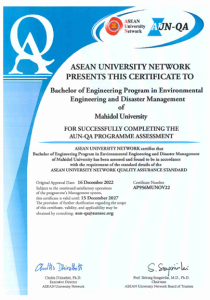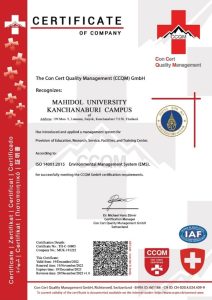Greenhouse Gas Emission
As the Mahidol University sets the policy “9 to zero” which plans to reduce greenhouse gas emissions within the university to zero within 9 years or by 2030, MUKA cascades the university’s policy to our campus. Right now, carbon sink for the green area of the Mahidol University Kanchanaburi campus which is evaluated by LESS (the Thailand Greenhouse Gas Management Organization (TGO)) is over 87,000 ton carbon dioxide equivalent. The greenhouse gas emissions at the MUKA exploits only 900 ton carbon dioxide equivalent which is nearly 100 times less than the carbon sink being evaluated. Even though MUKA has already passed the “Net Zero Emission” policy, we still continue our actions to reduce green house gas in our campus. Nine principles guide for action; including renewable energy, resource efficiency, clean energy for transportation, green area (carbon sink), green procurement, research and technology for a carbon capture / reduction, plant-based consumption, zero waste to landfill, and monitoring & improvement, which are recommended by university are also implemented in our campus. Many KPIs for ISO 14001 have been set to follow this guide. For example, clean energy has been currently used and replaced for energy consumption over 30%. Attempts have been made to increase the replacement of energy consumption up to 45% within 4 years.




